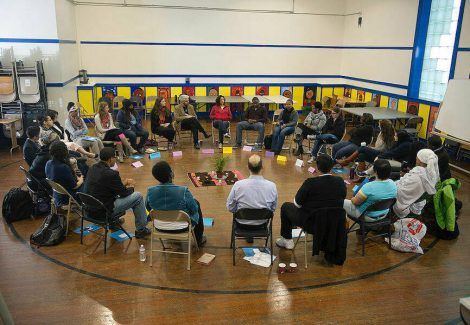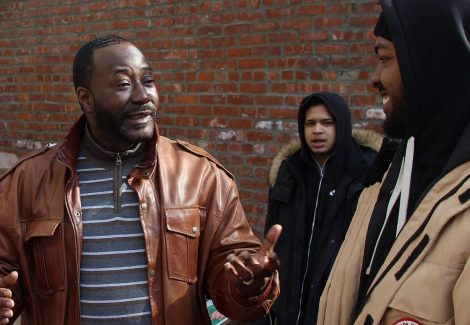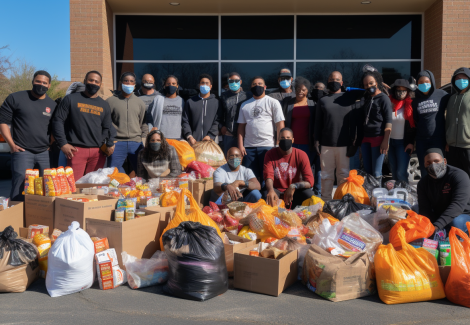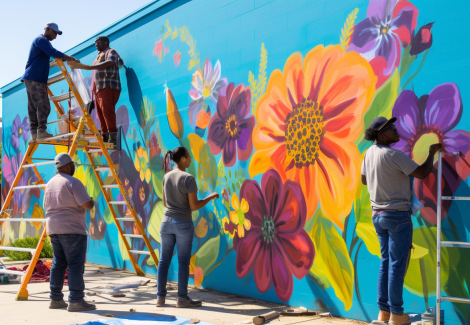
On June 6, 2020, New York City enacted local law § 9-207 establishing a Local Conditional Release Commission. Members of this commission have the powers to release incarcerated individuals based upon article 12 of the correction law or any successor statute. New York state laws refines the criteria through several laws, primarily Correction Law 273 which states:
Individuals serving non-violent definite sentences with an acceptable institutional record, a minimum sentence of 120 days of incarceration, are eligible to apply for Local Conditional Release (LCR) after serving 60 days of their sentence. Individuals eligible for LCR must submit an application which showcases strong ties in one of the following areas: employment, permanent residence, and family. Following a positive determination of an LCR application, the individual is released to local supervision and remains under legal custody of the LCR commission for a period of one year.
As an Alternative-To-Incarceration strategy, further referred to as (ATI), we have developed a comprehensive program that best equips Justice-involved individuals eligible for Local Conditional Release with the resources they need to live successful lives once released. Our protocols use evidence based research to emphasize treatment methods focused on the most severe criminogenic needs of returning individuals. These areas of focus include: Behavioral Health, Lifestyle Enrichment, Education, and Employment.
When combined these methods are specifically designed to mitigate the challenging transition individuals face when returning back into society. Our ATI’s structure was specifically designed based on the statutes of New York Correction Law 293 which mandates a 90-day period of incarceration followed by 1-year of supervision. During an individual’s participation in our ATI, they begin with substantial programming while incarcerated, which we refer to as the (A-component). Upon release to the required one year supervision, participants receive an intentionally designed linkage supplement to their A-component training which consists of comprehensive reentry programming which we refer to as the (B-component).
The A-component was specifically created, using evidence based research, to foster a conducive learning environment where individuals have a safe space to evaluate the negative consequences of their past behaviors, while also accepting responsibility for said behavior. In the B-component of our ATI, individuals are given the opportunity to apply skills learned in the A-component through real-world applications and further refine their personal development process by engaging in continued positive programing. The multifaceted nature of our program ensures returning individuals have access to crucial resources along every step of the transition back into their communities.
Our primary focus is to provide individuals with the ability to recognize the pitfalls of their past decisions and provide them with all the necessary resources to make better choices.
In the A component this process involves weekly Behavioral Health sessions with a licensed professional, progressing according to need, to more flexible scheduling in the B component. The A-component and B-component, have been designed for healthy engagement for participants utilizing Cognitive-Behavioral Therapy (CBT) which helps address a wide range of criminogenic factors. CBT is a highly effective treatment for depression, anxiety disorders, alcohol and drug use, marital problems, eating disorders, and severe mental illness. According to the Washington Institute for Public Policy, “every $1 spent on delivering CBT to adult offenders yields a savings of $6.31 in avoided criminal justice and associated healthcare costs, with a 97 percent likelihood that its benefits will exceed the cost of providing the service.”
By harnessing the effectiveness of CBT, our ATI disrupts years of bad decision-making in a cost-effective manner and creates positive thinking patterns for participants. According to the National Mental Health Association (2004), this approach is quite effective for youth involved in the legal system as it is structured and focused on triggers of disruptive or aggressive behavior. Through the dissection of underlying factors predicting an individual’s criminal offense, CBT offers a unique opportunity to address severe mental health issues while also reconstructing a positive thought process.
The shift from negative-thinking to positive-thinking is a crucial aspect of the A-component of our program and is reinforced through Lifestyle Enrichment. Here individuals engage in Therapeutic Wellness Services, furthermore referred to as (TWS), which include anger management workshops, meditation sessions, and physical conditioning. In addition to TWS, individuals learn interpersonal soft skills through leadership, participate in implicit bias training and go through a process of identity development which acknowledges the hardships experienced in their past, and highlights their strengths and abilities which participants will use while engaging in real time societal scenarios upon re-entry into their communities.
Lifestyle Enrichment also includes a series of basic digital literacy workshops, i.e. google suites, which transitions to a resume/interview preparation stage where individuals learn the process of securing gainful employment. This shift continues in the B-component of our ATI as individuals remain committed to TWS while also participating in community engagement events where they experience the beneficial effects of positive thinking.
During the shift towards positive-thinking, our ATI incorporates Education training designed to enhance soft skills learned through Lifestyle Enrichment. Education is a key arena for constructive change, especially when roughly 40% of the people entering prison do not have a high school degree or equivalency credential, a rate which is three times higher than for adults in the U.S. The lack of education becomes a serious issue where levels of an individual’s education directly correlates with their risk of recidivism, as evident in one study which found that as incarcerated people achieve higher levels of education their likelihood of recidivism decreases.
High school level education is only the initial step for ATI participants when reducing their likelihood for recidivism. Incarcerated people who participate in postsecondary education programs have 48 % lower odds of returning to prison.
With these statistics in mind, our ATI will work in partnership with CUNY and SUNY colleges to create a pipeline for individuals to receive access to higher education once released. In addition to our postsecondary educational pipeline, individuals can also further their education through the completion of various Google certifications in the fields of IT, Digital Marketing & E-commerce, Data Analytics, Project Management, and UX design. Through our Education training, ATI participants learn high-demand STEM skills, increasing their employability. These certifications leads to job openings in the salary range of $51,000 – $99,000.
Education training directly impacts an individual’s success in the Employment portion of our ATI. In the context of recidivism, one report found that employment assistance 90 days prior to release from prison and continued for up to one year after release, significantly reduced rearrest by 35 percent. Evenmore, educational and vocational training during incarceration has a profound impact on participants. Those who participated in vocational training were 28 percent more likely to be employed after release from prison than who did not receive such training.
Our ATI will work closely with local trade unions, private businesses, and CUNY and SUNY schools to cultivate working relationships between individuals participating in our program. Through developing partnerships with CUNY ASAP, ATI participants become students, exploring majors across various fields, including Medical Assistant , Digital Art Design, and Business Administration, with salaries ranging from $45,000 – $62,000 . In the B-component of our program, participants have the opportunity to pursue various vocations/trades to further increase their job prospects. Potential vocations/trades include HVAC, electrical, and welding, with salaries ranging from $40,000 – $55,000. Our specific STEM-focused Education curriculum produces highly skilled individuals who then work with employment partners to become economically productive members of their community.
Aligned with our community engagement principles, participants primarily work together with Community Based Organizations to produce positive change in their communities for 5-8 hours per week. According to one study, community service leads to a reduction in recidivism of 46.8% compared to recidivism after imprisonment. In addition to the positive effects of community service, a fully operational ATI program with 30 participants translates to $14,400 worth of local community-based service per month where participants actively help build back their communities.
Outcome: Individuals who participate in our ATI will receive Behavioural Health and Lifestyle Enrichment services, engendering a positive mental catalyst, which leads to healthier lifestyle choices. Individuals will also engage in Education training in STEM related fields and vocational training, equipping them with the tools to actively participate in our Employment pipeline which leads to securing gainful employment. Our ATI provides the opportunity for clients to showcase their metamorphosis through the local community and uses this medium as an arena for profound positive impact.










Join us on this journey to a new chapter of your life. Together, we will unlock your potential, promote healing and rehabilitation, and create a more just and equitable society for all.
Contact us today to learn more.
At Policy, Inc., we are committed to advocating for policy solutions that will address these issues and promote justice and equity in South East Queens.
Copyright © 2024 Policy Inc All Rights Reserved
Website was created by C&P Creative
establishes legislative intent
establishes procedures and parameters for sealing criminal convictions.
establishes requirements for sealed records.
establishes authority to promulgate forms, procedures, and processes for the sealing of records.
incorporates records sealed under this legislation into exist-ing prohibitions against discrimination.
address sealing of corrections records.
establishes a private right of action.
establishes severability.
the effective date.